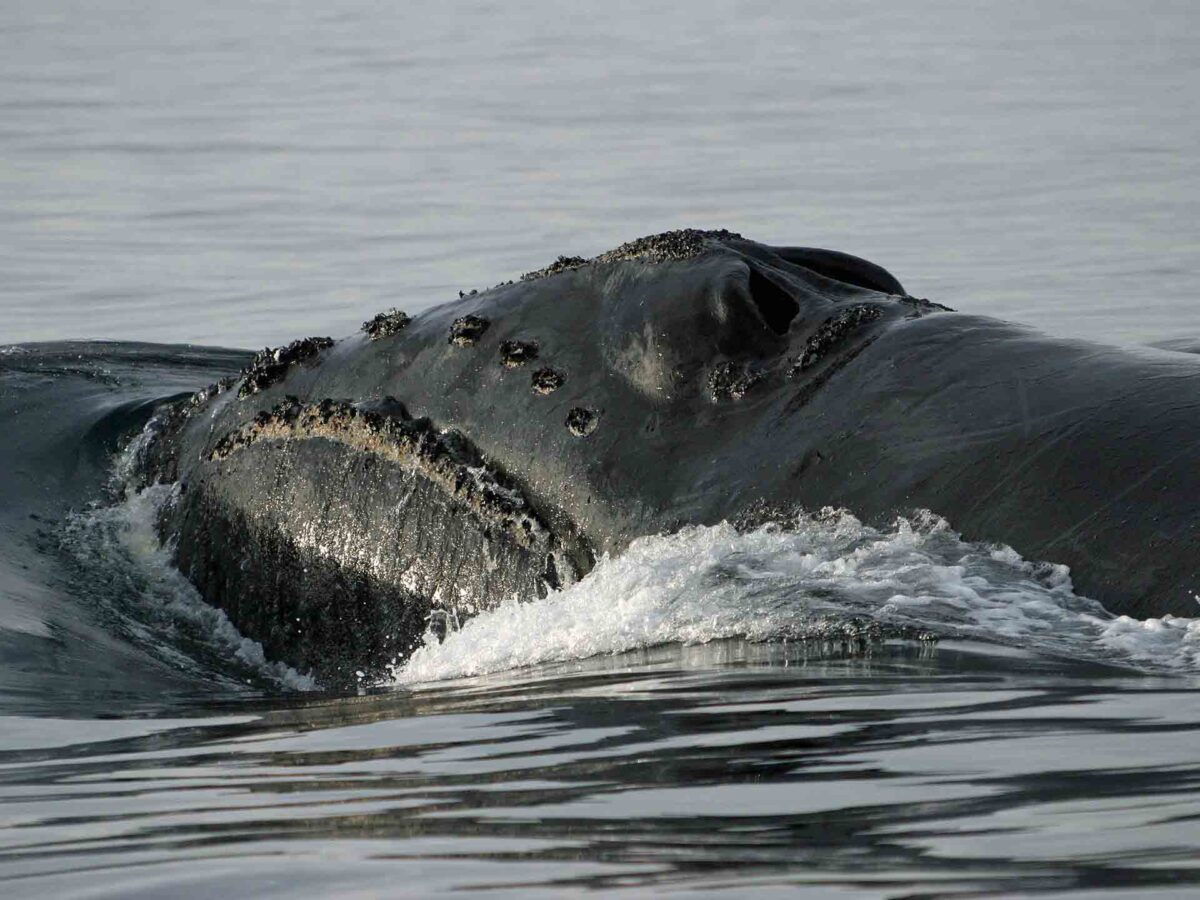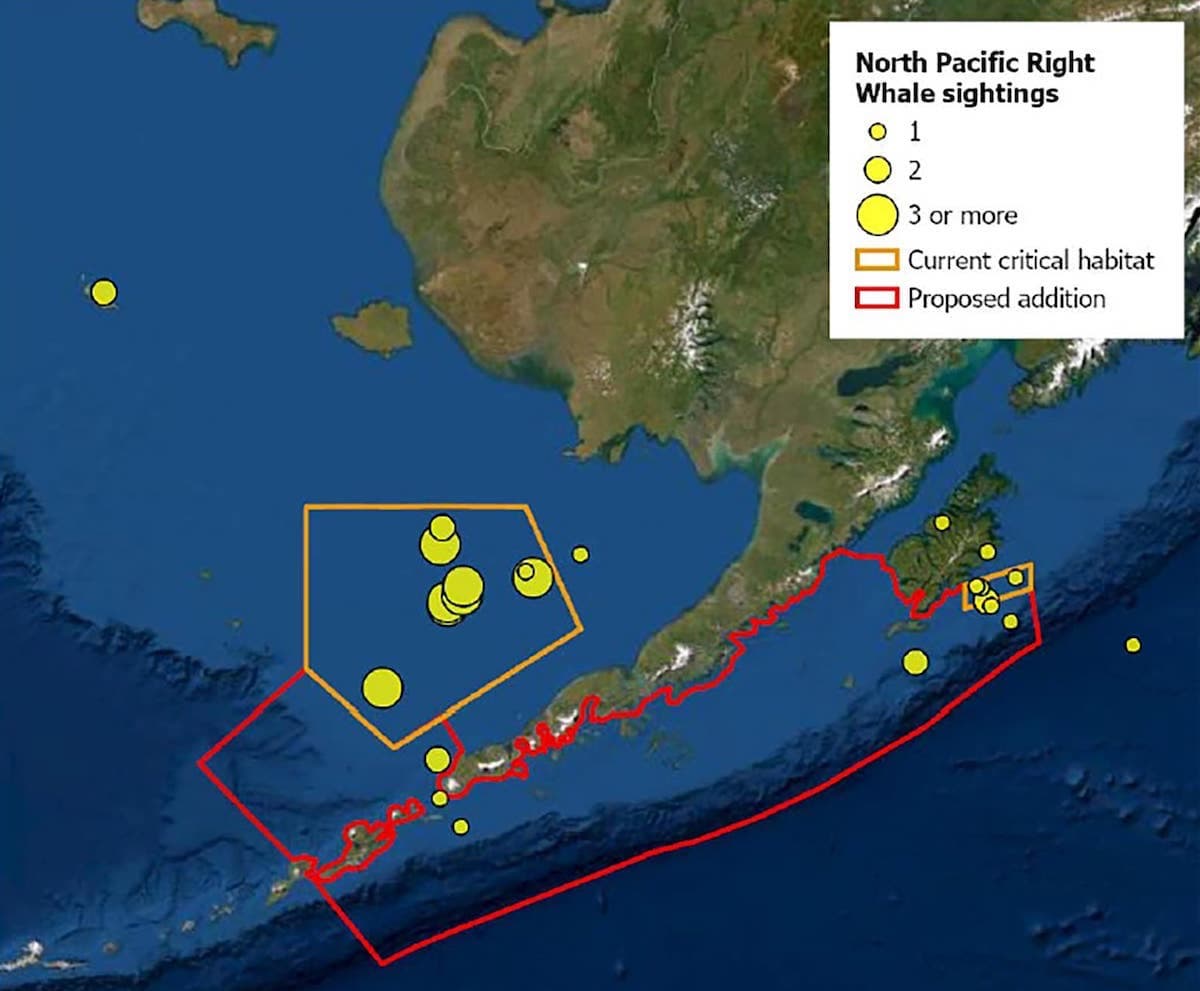How Can We Protect the North Pacific Right Whale?
NOAA Fisheries considers expanding critical habitat designation for one of the most endangered species on the planet: the North Pacific right whale

This blog was written by Kirsten Williams, Summer 2022 Legal Intern for Ocean Conservancy. Kirsten is entering her fourth year as a joint Law (JD) and Master of Environmental Management (MEM) student at Vermont Law & Graduate School and the Yale School of the Environment. Her work focuses on climate change litigation, ocean law and policy, and renewable energy.
The North Pacific right whale is one of the rarest of all large whale species, and one of the most endangered species on the planet. Despite its massive size (more than 50 feet long!), the North Pacific right whale feeds on tiny plankton by filtering hundreds of gallons of seawater in a single gulp to filter out the organisms with baleen plates.
In addition to the North Pacific right whale, two other species of right whale exist: the North Atlantic right whale, found in the Atlantic Ocean, and the Southern right whale, found in the Southern hemisphere. This blog focuses on the North Pacific right whale.
NOAA Fisheries estimates that only about 30 individuals remain in the Eastern North Pacific right whale stock that visits the Gulf of Alaska and the Southeast Bering Sea.
The North Pacific right whale has been listed as “endangered” under the Endangered Species Act since 1973 and is listed as “depleted” under the Marine Mammal Protection Act.
Get Ocean Updates in Your Inbox
Sign up with your email and never miss an update.
Data are exceedingly limited for North Pacific right whales due to their small population size and scattered distribution. According to a 2020 stock assessment, the location of winter calving grounds for the North Pacific right whale remains a mystery. Researchers also struggle to assess threats to this species. NOAA Fisheries hypothesizes that vessel strikes, entanglement with fishing gear and other marine debris, ocean noise, biotoxins from harmful algal blooms and climate change may contribute to the whale’s declining numbers.
On July 12, 2022, NOAA Fisheries announced in a review of the designated critical habitat for North Pacific right whales under the Endangered Species Act. Critical habitat is habitat that is needed to support recovery of a listed species. In designated critical habitat, federal agencies are required to consult with NOAA Fisheries to help ensure federal actions do not destroy or adversely modify the habitat.
NOAA Fisheries’ critical habitat announcement came in response to a petition requesting that the agency connect two existing critical habitat areas. According to the petition, connecting the two existing critical habitat units into one expanded, single unit would better protect the fundamental physical and biological needs, such as vital feeding grounds, of this gravely endangered whale.
In April 2008, after the North Pacific right whale was listed as a separate endangered species—distinct from the North Atlantic right whale—NOAA Fisheries designated approximately 1,175 square miles in the Gulf of Alaska and approximately 35,460 square miles in the Southeast Bering Sea as critical habitat for North Pacific right whales.

The Endangered Species Act requires NOAA Fisheries to solicit comments and new information. Members of the public, governmental agencies, Tribes, the scientific community, industry, environmental organizations and any other interested parties are invited to submit comments on the proposed expansion of designated critical habitat for North Pacific right whales.
Following the public comment period that ends September 12, NOAA Fisheries embarks on an extensive review of the whale’s status, including its biology, ecology, abundance/population trends and any current threats. The agency has 12 months after receiving the petition to conduct the status review and make a final determination on whether the petitioned action—critical habitat expansion—is warranted.